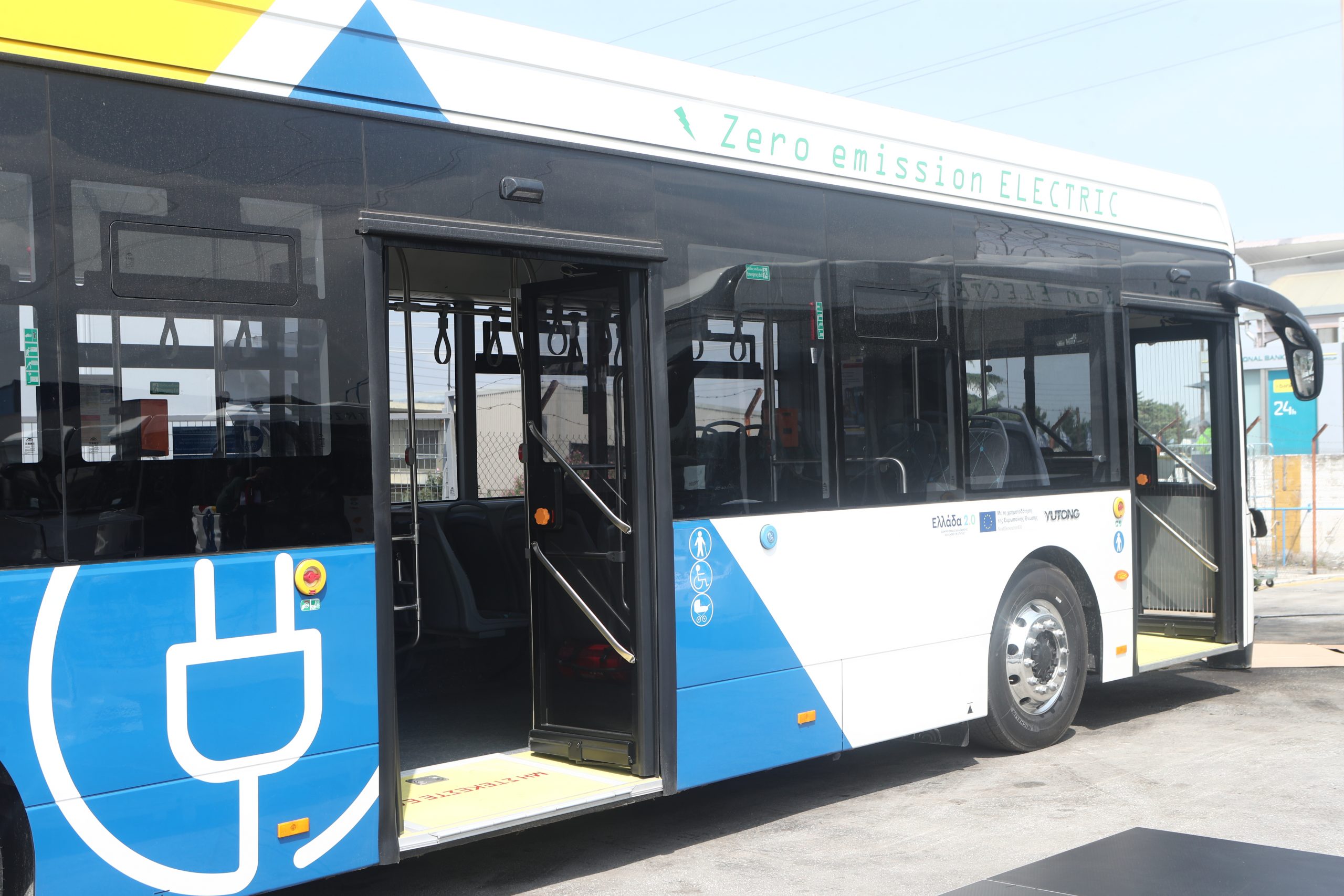The Ministry of Infrastructure and Transportation introduced 250 “green” buses to Athens’ and Thessaloniki’s streets on Thursday.
Specifically, the Athens Area Urban Transport Organization (OASA) and the Transport Authority of Thessaloniki (TheTA) integrated 140 and 110, respectively, Yutong electric buses to their fleets in a crucial step to limiting their carbon footprint in urban areas.
These modern buses feature ramps and designated spots for people with disabilities, along with USB ports in all seats. They also have a safety system integrated into the front windshield that assists the driver in vehicle handling, by emitting a specific noise when detecting obstacles. The 12-meter vehicles have a 350 kW engine power and a range of 207 kilometers, according to the manufacturer, with a total capacity of 75 passengers, 35 of whom are seated.
In Athens, the new vehicles will operate within the urban network of Athens and Piraeus, while in Thessaloniki they will primarily cover areas in the western part of the city.
Transport Minister Christos Staikouras noted that the long term goal is to replace at least 1,300 outdated buses with new, low-emission vehicles by 2027. “The Ministry is implementing a comprehensive plan for renewing the fleet of urban transport in Athens and Thessaloniki, focusing on sustainable urban transportation, while simultaneously improving accessibility for citizens facing mobility issues.”
He also commented on the prospect of acquiring an additional 300 Compressed Natural Gas (CNG) buses by the end of 2025, and the plan for the procurement of 700 slow and rapid charging electric buses in Athens and Thessaloniki, as well as trolleybuses for the Athens area.
A significant digital reform is also underway, with contactless payment methods being introduced on public transportation. By the end of 2024, citizens in the Attica region will be able to use their bank card or mobile phone to pay for their fare.



